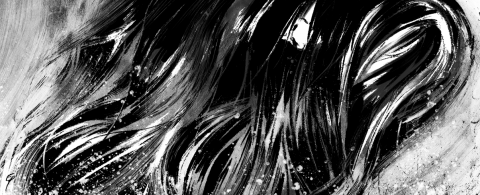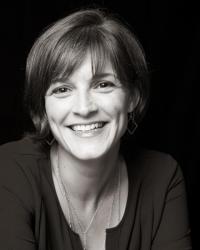My story “Where Have the Vanished Girls Gone?” begins with the following line: “The doctor examines me because I am still here.” I wound this sentence 'round and 'round in my mind, like twirling a strand of hair around my finger, for weeks before I knew what to do with it. For me, new fiction rarely begins with a line. Instead, my stories start in a specific image—or, most often—a clear vision of a setting. This time I had neither. All I had was that first sentence, disembodied from a character, plot, or place; and yet I couldn’t let it go.
Years before, I’d written most of the draft of a novel about a group of three school girls who—like me in my own adolescence—were driven by reckless energy and boredom, and by that relentless, buzzing longing for more (whatever more might mean) that so defines the experience of youth. I wrote for these girls a world of active resistance to their desires, active attention to their rebellions, and active hostility towards their various ill-advised and naïve means of self-destruction. Where I went wrong with their story, however, was in forgetting that other reality of adolescence, specific I think to adolescent girlhood: invisibility. That oversight made my plotting feel contrived and artificial, and it forced the characters into a caricaturized version of girlhood that, in the end, I didn’t recognize. And so I set aside that novel draft and moved on to other stories for over a decade.
And then that line appeared in my mind: “The doctor examines me because I am still here.” Who would speak such a line? I wondered. Whose physical presence could provoke the curiosity (or maybe wonder) that would lead to a real examination of her existence?
The central crisis of my own adolescence was a struggle with anorexia that winnowed me to a ghost of myself. I’ve written about that period of my life—the near vanishing of it and the eventual recovery—many times and in many forms, but I hadn’t yet written about the metaphor I see in my own anorexia of the cultural kind of vanishing adolescence meant for me. At twelve and thirteen, I was hyper aware of the social expectations I carried as a girl, and also of the ways I was failing to meet them. I was too tall, too bookish, too quiet, too angry. My family moved every summer between my fourth and seventh grade years, and the new schools only heightened my sense that it was best to disappear, to erase myself and all of the odd and difficult and un-“girlish” elements of myself before anyone noticed them and called me out.
Conversely, though, I simultaneously and desperately wanted nothing so much as to be seen, and my increasing invisibility felt like the result of forces I couldn’t quite understand or control.
I remembered those years of my life and what it felt like to be that vanishing girl as the sentence that had come to me—seemingly out of the air—snailed in my mind. I remembered, too, my unfinished novel and those girls whose characters I had bungled. Maybe it was their voice I was hearing in that sentence now, I thought. Maybe I had found another way into their story, another chance at getting it right.
And that’s where the fiction really began to fall into place—in the decision to try to make both the girls and their invisibility real.




